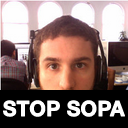Abstract: The challenge for any company is creating products customers actually want, reducing cost, and eliminating waste in the process. The lean thinker does this in part through experimentation. Teams practicing LeanUX inside of organizations embracing Agile have developed a set of principles and methods for experimentation based on collaboration, customer research, problem space exploration, set-based design of solution hypotheses, and tight feedback loops. These approaches increase the optionality in the product development pipeline while mitigating risk. These principles and methods in experimental design based on the scientific method don't come naturally, but they are very useful and valuable if you are interested in increasing organizational learning, reducing risk, and delivering real value to customers.
While PDCA, A3, and LAMDA (Lean techniques that are just now gaining traction in the Agile community), have been used rigorously within operations and manufacturing, the LeanUX learning loop of Think > Make > Check > Learn applies many of these principles to designing new solutions in the context of knowledge work like software design in enterprises.
This session presented by Jabe Bloom & Will Evans, will briefly explain the foundations and context of lean product and process development and LeanUX; the basics of inductive, deductive, abductive logic, as well as hypothesis formulation and testing across multiple, concurrent designed solutions. We'll also introduce a couple of simple methods for team-based, collaborative experiment design using a variation of the A3 called the experiment canvas.
Finally, we'll draw connections between LeanUX methods and traditional lean learning loops including ideas from LPPD (Lean Product and Process Design) set-based concurrent engineering. Participants will leave with light-weight techniques they can use to run design experiments with their team the very next week.
Learning Outcomes: - Learning Outcomes:
- Learn how human-centered design can be combined with Lean in the design process.
- Exploring the boundaries and constraints of a problem space.
- Complexity informed design thinking and how can it help with product design.
- Collaborative methods to increase, integrate, and iterate options?
- The design of simple, yet robust, experiments
- Formulation of good metrics and measurement schemas for our experiments.
- How to measure the learning from experiments.
